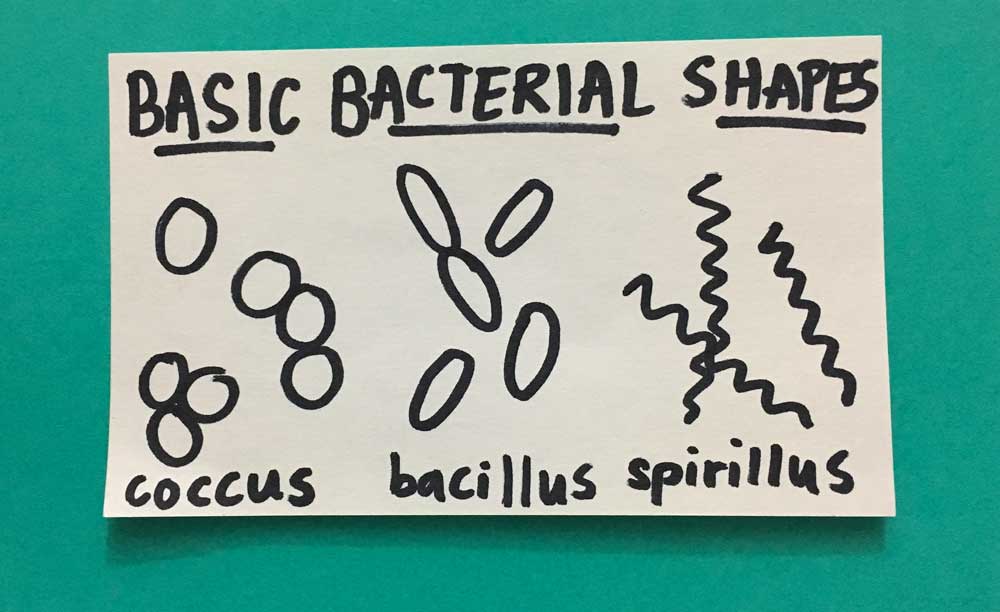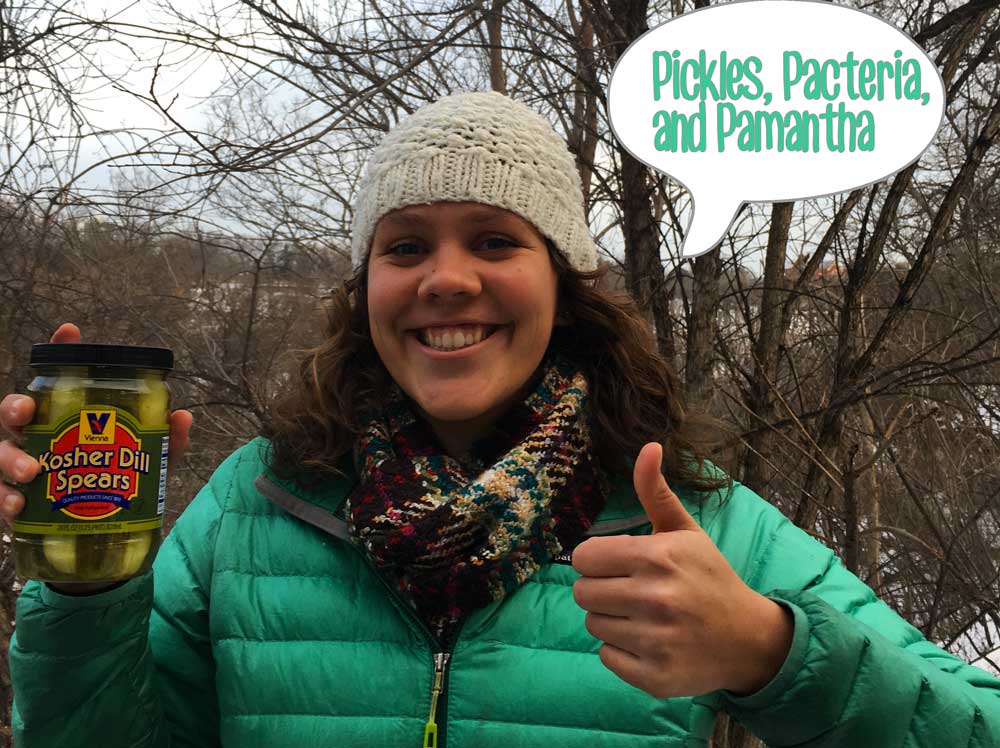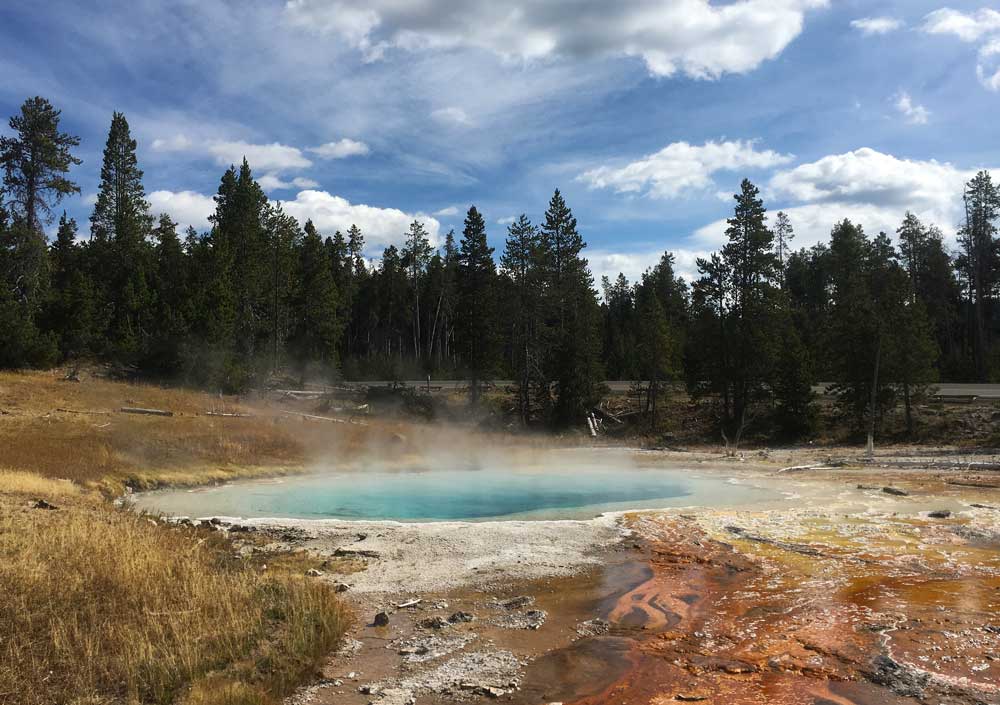Mirror, mirror, on the wall, what are the most diverse, adaptable, and resilient organisms of all?
If I had a magic mirror that could answer this question, I’m sure it would reply, without hesitation, “bacteria!”
 Bacteria are amazing organisms that perform a number of important functions that make all other life on Earth possible. Though we cannot see bacteria, we could not welcome students to High Trails each week without them!
Bacteria are amazing organisms that perform a number of important functions that make all other life on Earth possible. Though we cannot see bacteria, we could not welcome students to High Trails each week without them!
So, what makes bacteria so special?
Bacteria are microscopic, single celled organisms. Like plants and animals, these organisms can be many different shapes and sizes, but the majority of bacteria are spherical, rod shaped, or spiral shaped, otherwise known as cocci, bacilli, and spirilli, respectively. While some bacteria exist alone as single cells, other bacteria form patterns, like pairs, clusters, or chains.
 Scientists think bacteria were some of the first organisms to live on Earth, billions of years ago. Bacteria can live in almost any ecosystem, including the deepest parts of the ocean, frozen ice caps, and steaming hot geysers.
Scientists think bacteria were some of the first organisms to live on Earth, billions of years ago. Bacteria can live in almost any ecosystem, including the deepest parts of the ocean, frozen ice caps, and steaming hot geysers.
Geek Out For A Moment: “Almost any hot spring or geyser you see hosts bacteria. Some chemosynthesize, changing hydrogen or sulfur into forms other thermophiles can use. Most photosynthesize, providing oxygen to other thermophiles. All of the cyanobacteria and green nonsulfur bacteria photosynthesize. Some fulfill both roles. For example, Thermus sp.—which are photosynthetic—also may be able to oxidize arsenic into a less toxic form.” 1
But why are bacteria so important for humans?
Humans can’t digest all of the fats, proteins, and carbohydrates we need to stay healthy. Trillions of bacteria live in our digestive tracts and break down food into nutrients we can absorb and use. Bacteria also help us preserve food through fermentation by converting sugars to acids, gases, or alcohol. Fermented foods you might find in the High Trails dining hall include yogurt, cheese, and pickles. Pickles?
Trillions of bacteria also live on our skin. These bacteria protect us by preventing harmful bacteria from having space to grow and make us sick. Scientists estimate “more than 10,000 microbial species occupy the human ecosystem,” 2 that could be between 2-6 pounds! 3
 Beyond direct benefits for the humans of High Trails, how do bacteria help other organisms in the San Bernardino National Forest?
Beyond direct benefits for the humans of High Trails, how do bacteria help other organisms in the San Bernardino National Forest?
Bacteria fill a number of roles in the San Bernardino National Forest. Along with fungi and invertebrates, bacteria are one of the primary decomposers of dead plant and animal material. Bacteria break down dead organisms into small, usable parts that plants can take up again through a process called nitrogen fixation. Bacteria also work to convert nitrogen in the air into a usable form for plants to use. Nitrogen is an important component of DNA, RNA, and amino acids—the building blocks of proteins. Different bacteria live in different types of soil, and the type of bacteria determine the types of plants that can grow in a particular place. 4 Without bacteria, food chains would grind to a halt!
Not all bacteria are helpful or harmless, though—some bacteria cause diseases, including strep throat, tuberculosis, salmonella, and the bubonic plague. However, less than one percent of all bacteria make us ill.
 Scientists estimate a total of over 5 x 〖10〗^30 (five million trillion trillion, whoa!) bacteria live on Earth, creating a biomass that exceeds that of all plants and animals combined. 5 No other organisms can survive in or adapt to such diverse environments. Without bacteria in the San Bernardino National Forest, High Trails would not be the same. Thanks for all you do, bacteria!
Scientists estimate a total of over 5 x 〖10〗^30 (five million trillion trillion, whoa!) bacteria live on Earth, creating a biomass that exceeds that of all plants and animals combined. 5 No other organisms can survive in or adapt to such diverse environments. Without bacteria in the San Bernardino National Forest, High Trails would not be the same. Thanks for all you do, bacteria!
At High Trails Outdoor Science School, we literally force our instructors to write about elementary outdoor education, teaching outside, learning outside, our dirty classroom (the forest…gosh), environmental science, outdoor science, and all other tree hugging student and kid loving things that keep us engaged, passionate, driven, loving our job, digging our life, and spreading the word to anyone whose attention we can hold for long enough to actually make it through reading this entire sentence. Whew…. www.dirtyclassroom.com
- https://www.nps.gov/yell/learn/nature/thermobacteria.htm ↩
- https://www.nih.gov/news-events/news-releases/nih-human-microbiome-project-defines-normal-bacterial-makeup-bodyand bacterial cells outnumber human cells in our bodies 10 to 1 . Between 1 and 3 percent of your body mass is bacteria— ↩
- https://www.nih.gov/news-events/news-releases/nih-human-microbiome-project-defines-normal-bacterial-makeup-body ↩
- https://www.newscientist.com/article/2096740-soil-organisms-alone-can-determine-which-plants-grow-where/ ↩
- https://www.ncbi.nlm.nih.gov/pmc/articles/PMC33863/ ↩


Comments are closed.